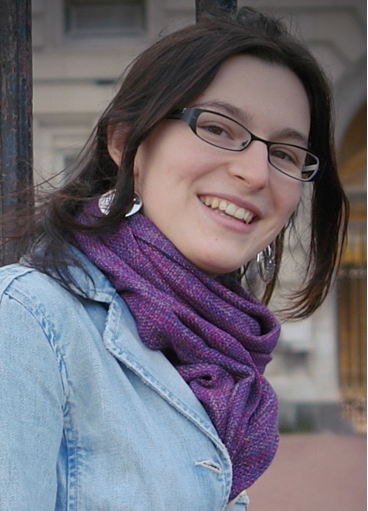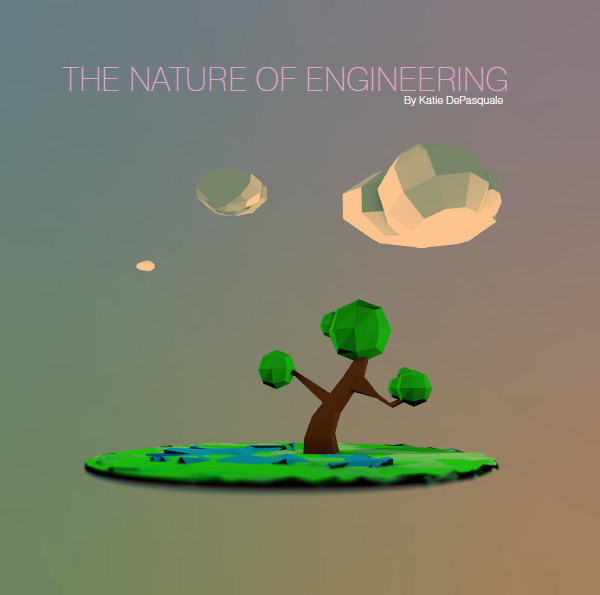Imagine being able to take a bacterium, like E. coli, and direct it to a specific spot in the body for targeted medical treatments. Imagine being able to design inexpensive robots that can randomly distribute themselves throughout the ocean without using GPS or any type of communication. Imagine, in essence, learning how to create a robotic system as elegant and productive as one created by nature itself, and this describes the work of Noele Norris.
A third-year graduate student at LIDS, Noele is studying bacteria, and how they swim, in a quest to understand how their habits can be applied to robots. With a background in robotics, she came to LIDS planning to continue her work through a study of transportation networks with her advisor, Professor Emilio Frazzoli. Instead, to her own surprise, she has ended up focusing on systems biology, which takes an interdisciplinary approach to examining the intricate interactions of biological systems like the enzymes and metabolites in a metabolic pathway. "Emilio gave me the opportunity to explore... and he talked to a colleague about his research studying how bacteria swim", Noele says, "and Emilio saw some similarities. What can we do if we think of bacteria as robots? Can we gain a better understanding of what bacteria are doing, and can we also gain insights from bacteria about how we can better engineer robots to be as efficient as bacteria? And now, I've been doing that for the last three years."
Noele's path to her current research has been circuitous. It has led her from her hometown of Miami, Florida, to Caltech in Pasadena, and then to London for a Master's in English Literature. She began her studies at MIT and LIDS after returning to the United States, but never expected she would end up immersing herself in biology. "For so many years, I've been learning about these abstract engineering systems, how humans engineer various systems, and in particular robots", says Noele. "And then suddenly, I saw that this is how nature does it. I think I'd always been very scared of biology's complexity -- all of its terminology -- but then suddenly seeing it as an engineered system, it all made sense to me and was incredibly exciting." Her background in math and engineering has proven to be the strong foundation she needed to dive into her current research project, which focuses on using microfluidics to study the movements of bacteria.
Because bacteria are mere microns in size (for the sake of comparison, a human hair averages 150-200 microns thick), they can be tricky to examine. This means that when looking at their motility, it is most informative to have a situation in which you have complete control over their environment. Professor Roman Stocker's lab with the Civil and Environmental Engineering Department at MIT does just that. They structure their experiments to set up and then alter the composition of the fluids surrounding the bacteria with precision; and Noele has been gathering and analyzing the data from those experiments with a focus on how the bacteria respond to the distribution of nutrients in a particular environment. She explains, "It turns out that what bacteria do is accumulate in environments that are very rich in nutrients. And how do they do this? They swim in random directions for random amount of times. But they swim longer in a direction when they measure that the environment is improving. In other words, when they measure that the nutrients are greater in their current location than in their previous location, they are more likely to continue to swim in the same direction."
It may not seem immediately obvious how the random movements of a microorganism can be applicable to robots. As Noele says, it would seem like robots would have to communicate with each other to achieve the type of successful distribution that bacteria randomly have. But that is exactly where the value lies. "Bacteria obviously don't have GPS. They don't know where they're located in their environment," says Noele. "They do not communicate with each other when they're looking for nutrients. It's just that they're able to distribute themselves nicely because they're swimming randomly. They're continuously swimming all over the environment, and they're just spending more time in areas where there are more nutrients. For me, that's really interesting because these are the sorts of things that we would want robots to be able to do, for various environmental monitoring or surveillance tasks." Therein lies one of the key questions of her research: "Can we make really cheap, really stupid robots that can achieve these tasks?"
The benefits of a successful application of minimalistic robotics could be enormous, from monitoring ocean environments for contaminants to searching for evidence of climate change. There is also value in examining the question from the other angle, which is how to use bacteria themselves as robots, prodding them to swim to a particular location. For example, what if, instead of E. coli sitting in a container producing proteins for medical treatments, it was sent to the intestine to target the medicine precisely where it is needed? Learning how to use bacteria as robots could have farreaching effects, both for purposes of bioremediation and for the potential impact on medicine.
Looking for new insights in unexpected places is not unusual for Noele. It is exactly what she did when getting her Master's in English Literature: she went to London planning to study modern literature and the works of Virginia Woolf and ended up writing a thesis about the female voice in the early English novel, focusing on the writers Daniel Defoe and Samuel Richardson. "I really surprised myself. I.m continually surprising myself by reading more of these strange books," Noele laughs. "What really excites me about literature and why I enjoy studying it and reading it is that I put myself in completely new experiences, and I get a sort of insight into what it was like to be living in 18th century London." This open approach to learning has led her in new directions at LIDS, too, and continues to push her to explore and investigate the world in different ways. For now, however, she is very happy with her current research path and with her colleagues at LIDS. "I think that the best thing about LIDS," she says, "is that I'm continually interacting with people who are challenging me, giving me ideas, and who are doing incredible things themselves."




